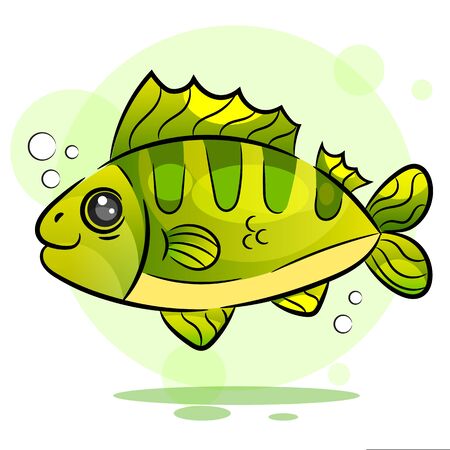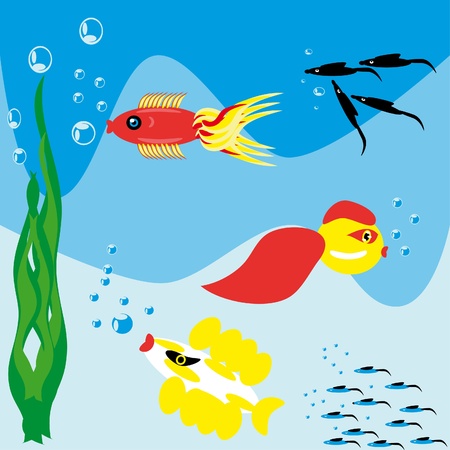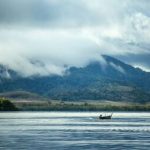1. Understanding Endangered and Protected Species
As an angler in the United States, its important to know that not every fish or marine animal you see is fair game. Some species are considered endangered or protected by federal law, which means there are strict rules about interacting with them—whether thats catching, keeping, or even just disturbing them.
What Makes a Species Endangered or Protected?
In the U.S., two main federal laws help identify and protect at-risk species: the Endangered Species Act (ESA) and the Marine Mammal Protection Act (MMPA). These laws were created to prevent the extinction of vulnerable wildlife and to promote conservation efforts.
The Endangered Species Act (ESA)
The ESA was passed in 1973 and is managed by both the U.S. Fish and Wildlife Service (FWS) and the National Marine Fisheries Service (NMFS). This law focuses on protecting animals and plants that are at risk of extinction. Under this act, species can be listed as either “endangered” or “threatened.”
| Status | Description |
|---|---|
| Endangered | A species in danger of extinction throughout all or a significant portion of its range. |
| Threatened | A species likely to become endangered in the near future. |
The Marine Mammal Protection Act (MMPA)
Enacted in 1972, the MMPA protects all marine mammals in U.S. waters, regardless of their population status. This includes whales, dolphins, seals, sea lions, manatees, and more. The act makes it illegal to hunt, harass, capture, or kill any marine mammal without a special permit.
Why This Matters for Anglers
If youre out fishing and accidentally hook a protected species—or even if you’re just too close—it could lead to serious legal trouble. That’s why knowing which species are off-limits is just as important as knowing what bait to use. Ignorance isn’t a defense under these laws.
Examples of Commonly Protected Species Anglers Might Encounter:
| Species | Status | Protected Under |
|---|---|---|
| Atlantic Sturgeon | Endangered | ESA |
| Kemps Ridley Sea Turtle | Endangered | ESA |
| Bottlenose Dolphin | Protected | MMPA |
| Humpback Whale | Varies by population | MMPA & ESA |
| West Indian Manatee | Threatened | MMPA & ESA |
Staying informed helps you stay legal—and helps protect our oceans for future generations of anglers.
2. How Anglers May Encounter Protected Species
Recreational fishing is a popular pastime across the United States, but even the most well-meaning anglers can unintentionally come into contact with endangered or protected species. Understanding how these encounters happen is key to staying compliant with federal and state wildlife laws.
Bycatch: Accidental Catch of Protected Species
Bycatch occurs when anglers unintentionally catch a species they weren’t targeting. This is one of the most common ways recreational fishers encounter protected marine life. For example, while targeting snapper or grouper, an angler might accidentally hook a Goliath grouper, which is protected under federal regulations.
| Target Species | Common Bycatch Risk | Protected Status |
|---|---|---|
| Snapper | Goliath Grouper | Protected under NOAA regulations |
| Tuna | Sea Turtles | Endangered under ESA |
| Sharks (non-protected) | Sawfish | Critically Endangered |
Habitat Disruption: Fishing in Sensitive Areas
Some fishing spots may overlap with habitats critical to endangered species. For instance, seagrass beds and coral reefs are not just beautiful fishing locations—they also serve as essential breeding grounds for many threatened species like manatees and certain reef fish. Anchoring boats or walking through shallow waters can damage these areas and disturb the wildlife that depends on them.
Tips to Avoid Habitat Disruption:
- Use designated mooring buoys instead of anchors in sensitive zones.
- Avoid disturbing seagrass beds and coral formations.
- Follow local signage and marine park rules.
Misidentification: Mistaking a Protected Species for a Legal One
Some protected species closely resemble legally catchable fish, especially when they are juveniles. For example, the smalltooth sawfish looks similar to some types of sharks and rays but is federally protected. Misidentifying such species can lead to unintentional legal violations.
Commonly Confused Species:
| Legal Species | Similar Protected Species | Key Differences |
|---|---|---|
| Lemon Shark | Smalltooth Sawfish | Saw-like snout on sawfish; not present on lemon shark |
| Nassau Grouper (in some regions) | Nassau Grouper (protected in others) | Status varies by location—check local rules before keeping any grouper species |
| Mutton Snapper | Mangrove Snapper (Juvenile) | Easily confused due to similar size/color when young—know your fish ID! |
The Bottom Line for Anglers
You don’t have to be an expert biologist to stay out of trouble—you just need awareness and a bit of preparation. Knowing how you might encounter protected species helps you take smarter steps on the water. In the next section, we’ll cover practical tips on what to do if you accidentally catch or disturb one of these animals.

3. Federal and State Regulations
When it comes to fishing in the U.S., understanding the laws that protect endangered and threatened species is crucial. As an angler, its your responsibility to stay informed about both federal and state regulations so you don’t accidentally violate conservation laws. These rules are in place to help preserve vulnerable fish populations and their habitats.
Federal Regulations
The U.S. Fish and Wildlife Service (USFWS) and the National Oceanic and Atmospheric Administration (NOAA) manage most of the federal rules protecting endangered marine and freshwater species. The Endangered Species Act (ESA) is one of the key laws that anglers should be aware of. Under this act, its illegal to catch, harm, harass, or kill any listed species without proper authorization—even by accident.
Common Federal Restrictions Include:
| Regulation | Description |
|---|---|
| No Take Zones | Areas where fishing for certain protected species is completely banned. |
| Incidental Catch Rules | If you accidentally catch a protected species, you must release it immediately using safe handling practices. |
| Permit Requirements | You may need a special permit if fishing near habitats known for endangered species. |
State-Level Rules
Each state has its own set of fishing regulations that may go above and beyond federal guidelines. These can include seasonal closures, size limits, or gear restrictions aimed at protecting local wildlife. Always check with your states fish and wildlife department before heading out.
Examples of State Regulations:
| State | Protected Species | Notable Regulation |
|---|---|---|
| California | Steelhead Trout | Certain river systems are closed during spawning season. |
| Florida | Goliath Grouper | No harvest allowed; catch-and-release only with barbless hooks. |
| Minnesota | Paddlefish | Special permits required; limited harvest season. |
How to Stay Compliant
- Check for updated regulations on official state wildlife websites before each trip.
- Download mobile apps offered by your state’s fish and game agency for quick access to rules on the water.
- If youre unsure whether a species is protected, it’s best to release it safely and report the catch if required.
- Take a photo of posted signs at boat ramps or parks—they often contain important seasonal or emergency notices.
By knowing the rules, respecting protected species, and practicing responsible angling, you help ensure that future generations can enjoy healthy fisheries too.
4. Penalties and Legal Consequences
Anglers in the U.S. need to be aware that interacting with endangered or protected species—whether by accident or on purpose—can lead to serious legal trouble. Federal and state laws are strict when it comes to safeguarding these species, and violating these rules can have real consequences.
Fines for Violations
If you accidentally hook or harm a protected species, you could still face fines. These penalties can vary depending on whether the act was accidental or intentional, and which species was involved.
| Type of Violation | Possible Fine Amount |
|---|---|
| Accidental interaction (first-time offense) | $500 – $5,000 |
| Intentional harm or capture | $5,000 – $50,000 |
| Repeat offenses | $10,000 – $100,000+ |
License Suspensions and Revocations
A fishing license is a privilege—not a right. If you’re found guilty of violating protected species laws, your fishing license could be suspended or even permanently revoked. This applies at both state and federal levels. Some states also share violation records, meaning one incident could affect your ability to fish in multiple states.
Examples of License Penalties:
- Temporary Suspension: 30 days to 1 year for minor or first-time violations.
- Permanently Revoked: For repeat offenders or serious intentional harm.
Civil and Criminal Charges
The legal system treats wildlife protection seriously. Anglers who knowingly harm endangered or protected species may face civil lawsuits or even criminal charges under laws like the Endangered Species Act (ESA) or the Marine Mammal Protection Act (MMPA).
Punishments May Include:
- Civil Penalties: Financial settlements or community service requirements.
- Misdemeanor Charges: Possible jail time up to 1 year.
- Felony Charges: Jail time over 1 year, especially for trafficking or repeated intentional harm.
The bottom line? Whether youre casting from a boat or fishing from the shore, its your responsibility to know what species are protected and how to avoid them. Staying informed helps keep our waters safe—and keeps you out of legal trouble.
5. Best Practices and Ethical Angling
As an angler, enjoying the great outdoors comes with a responsibility to protect the fish and wildlife that make our waters special. Understanding how to fish ethically and legally is especially important when it comes to endangered and protected species. Here are some simple tips to help you fish responsibly and avoid unintentional harm.
Know Your Species
One of the most important steps in responsible fishing is being able to correctly identify the species you catch. Many protected or endangered fish look similar to legal game fish, so taking time to learn their differences can save you from serious legal trouble.
| Species | Common Lookalike | Key Differences |
|---|---|---|
| Atlantic Sturgeon | Shovelnose Sturgeon | Larger size, bony plates along body, mouth closer to tip of snout |
| Gulf Grouper | Black Grouper | Darker coloration, deeper body shape, spawning season restrictions |
| Pallid Sturgeon | Shovelnose Sturgeon | Longer snout, fewer scutes, lighter color |
Select the Right Gear
Your fishing gear can make a big difference in reducing accidental catches of protected species. Choose equipment that minimizes harm:
- Use circle hooks: These reduce deep hooking and increase chances of safe release.
- Barbless hooks: Easier to remove and cause less injury.
- Non-stainless steel hooks: If lost in water, they corrode faster and reduce long-term harm to wildlife.
- Avoid using nets with knots or rough material: These can damage scales or skin of fish during handling.
Handle With Care
If you accidentally hook a protected species, how you handle it matters:
- Keep the fish in the water as much as possible.
- Avoid squeezing or holding by the gills.
- If tangled in line or net, gently untangle without causing injury.
- If release is required by law, do so quickly and carefully.
Report Encounters When Required
Certain states or federal agencies require anglers to report interactions with protected species. Reporting helps conservation efforts and keeps fisheries sustainable for everyone. Check local regulations before your trip so you know what’s expected if you encounter these animals.
Examples of Reportable Situations:
- Catching a listed endangered fish (even if released)
- Sighting marine mammals like manatees near fishing areas
- Nesting sea turtles near shore-based fishing spots
You can usually find reporting instructions on your state’s Department of Fish and Wildlife website or through NOAA Fisheries for marine species. Many agencies also provide mobile apps or hotlines for quick reporting while out on the water.
Stay Informed and Share Knowledge
The rules around endangered and protected species can change over time. Stay updated by checking official resources regularly, talking with local wildlife officers, or joining local angling groups. Sharing what you learn helps build a community of responsible anglers who care about conserving America’s natural resources for future generations.
Helpful Resources for Anglers:
- U.S. Fish & Wildlife Service (USFWS)
- NOAA Fisheries – Protected Species Directory
- Take Me Fishing – Ethical Angling Tips
Fishing responsibly isn’t just about following laws — it’s about respecting nature and preserving our favorite fishing spots for generations to come. By knowing what species youre targeting, using proper gear, reporting necessary encounters, and spreading awareness, every angler can play a part in protecting our waters.
6. Resources and Reporting Guidelines
As an angler in the United States, its important to stay informed about endangered and protected species regulations. Knowing where to find accurate, up-to-date information can help you avoid unintentional violations and contribute to conservation efforts.
Where to Find Official Species Lists
The following resources provide comprehensive and current information on protected and endangered species:
| Resource | Description | Website |
|---|---|---|
| U.S. Fish and Wildlife Service (USFWS) | Federal list of endangered and threatened species across the U.S. | fws.gov |
| NOAA Fisheries | Information on marine species protected under the Endangered Species Act (ESA) and Marine Mammal Protection Act (MMPA) | fisheries.noaa.gov |
| State Fish and Wildlife Agencies | State-specific lists and regulations for protected species in freshwater or coastal areas | Find your state agency here |
How to Report Accidental Capture or Sightings
If you accidentally catch a protected species or see one in the wild, it’s critical to report it properly. This helps wildlife agencies monitor populations and take action if necessary.
Steps to Report an Incident:
- Do not harm or retain the animal. Release it immediately if possible, handling it as little as possible.
- Record details: Note the time, location (GPS coordinates if available), species (if known), behavior, and condition of the animal.
- Contact the appropriate agency:
Reporting Contacts by Situation
| Situation | Who to Contact | Phone/Website |
|---|---|---|
| Marine Species (e.g., sea turtles, whales) | NOAA Fisheries Stranding Hotline | Report online or call regional hotline |
| Inland/Freshwater Species | Your State Fish & Wildlife Department | Find contact here |
| Bald Eagles or Migratory Birds | U.S. Fish & Wildlife Service Law Enforcement Division | fws.gov/program/law-enforcement |
Keeping these resources handy while planning your fishing trips can help ensure youre doing your part to protect sensitive species—and staying compliant with federal and state laws.


